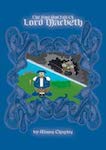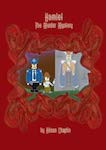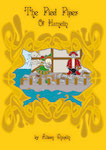COSTUMES
These can sometimes eat up most of your budget for a production, but you have to learn to be smart and spend your money wisely.
For costumes, search in second hand stores, charity shops and discount stores. Buy something that you think might come in handy as soon as you see it – it won’t be there when you go back for it!
Ask parents, school governors, neighbours, and other friends of your organisation to check their wardrobes for any clothes they may want to get rid of. Shirts can be cut down to size, worn as smocks, or turned into collar-less shirts. Skirts can be worn long with large belts or cummerbunds. Trousers can be cut down and turned into knickerbockers by threading a bit of elastic through a seam just below the knees.
Buckles can be made by wrapping silver foil around cardboard shaped liked a buckle and threaded onto a piece of elastic.
Visit craft and fabric stores to find offcuts and end of roll pieces of material, then hand these to some kind and crafty parents to turn into wonderful costume items.
Pillow cases and black refuse bags can be decorated with all manner of materials and motifs. Cut holes for the head and arms and wear with leggings or footless tights for a quick and easy costume. You can even buy refuse sacks in different colours so do bear this in mind!
Get even more creative: dress your actors in black trousers or skirts combined with white T-shirts. Add one more item – a tie, a scarf, a bag, a belt – in another colour to represent their character. For example, in a production of The Rise and Fall of Lord Macbeth, Lady Macbeth could wear red gloves, Lord Macbeth could wear a red belt, King Duncan could wear a red cape (or a red crown), Banquo could wear red socks, or a red hat. The options are endless. The items could be discussed with cast members and chosen for their relevance to the characters.
Another option is for your actors to wear black skirts or trousers combined with white T-shirts, upon which have been written words connected with their character. For example, in a production of Hamlet, the Murder Mystery, Hamlet could wear a T-shirt with the words Revenge, Grief or Anger written on it.
Make tights (pantyhose) your friends. Cut the feet off then team them up with long shirts or T-shirts to create all manner of magical, mythical and fantasy costumes. Cut a pair in half and stuff each leg with bubble wrap to create fantastic tails for animals – particularly effective for rats, as seen in the play The Pied Piper of Hamelin. Use the top of the leg, or the gusset, to create a mini balaclava onto which you can stick feathers, cotton wool balls, hay, or all manner of materials to make hats, headdresses or masks.
Make half-masks from felt or even paper plates cut in half. Get your actors to decorate them and thread them onto pieces of elastic. These are particularly good for animal masks.
Don’t be afraid to hire costumes. Many suppliers now offer special rates for schools and youth theatres. This option also saves you having to find somewhere to store costumes afterwards! Similarly, see if other schools – or amateur drama groups – in your area have costumes they could lend you. Another school or drama group might have performed your production a few years ago and, for a nominal donation, they might lend you all of the costumes you need. It’s always worth checking this.
Keep your eyes open for local shops closing down and grab yourself a clothes rail or two. These will be invaluable on performance nights, and will save costumes from being ruined before the final curtain comes down!
The main considerations when gathering costumes for your production are:
- Can actors see clearly? They may have to walk up steps, move around the stage or do a dance. Good vision is essential so make sure that your actors are safe.
- Is it too hot? School halls and theatres get very hot. Make sure you don’t buy or make costumes that will have young actors fainting (it can happen!)
- Make sure the costume is not a trip or a slip hazard. Long dresses are better to stop at the ankle, bare feet are safer than socks or tights.
- Similarly, if your actors have to dance or be particularly physical, make sure that their costume allows them to do this. It’s very distracting if they can’t or if bits start falling off.
- Is it flammable? Try to keep your actors safe by purchasing or making costumes that will not burn should the unthinkable happen.
Visit one of the costume suppliers in our Directory.







 This site uses cookies for tracking and statistical purposes. Please read our
This site uses cookies for tracking and statistical purposes. Please read our